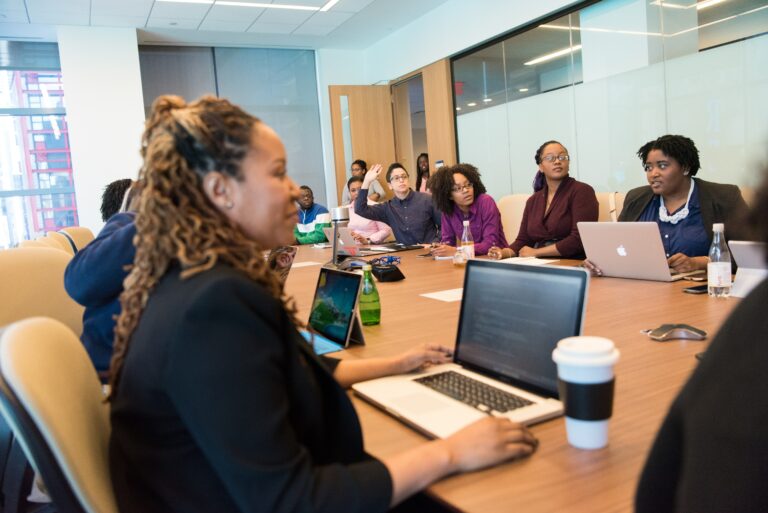7 Steps to Successful Employee Onboarding
When you onboard new employees, you have the chance to expose them to the business, the culture, and their new position. Employees can feel more at ease in their new workplace and role when their onboarding is done properly. Increased employee retention may result from it as well. In this article, we’ll outline the processes involved in onboarding new staff, explain the process, and offer some advice.
Describe onboarding.
The process of supplying new hires with the tools they need to settle into their new position with the organization is referred to as onboarding. In essence, it gives new workers a chance to settle in more easily and gives employers a chance to make a positive first impression. Additionally, this procedure boosts their chances of finding job satisfaction and puts them up for success in their new career. Usually, an employee from the human resources division oversees the onboarding procedure.
What advantages come with onboarding?
An effective onboarding strategy has the following primary benefits:
Productivity gains: By introducing new hires to the company’s software and processes during their first week on the job, it enables them to get started on their obligations right away. Because they have someone coaching them through these processes during their initial few days with the organization, it not only boosts productivity but also reduces the learning curve.
Facilitates adherence to policies and objectives: During the onboarding process, you have the opportunity to review the company’s goals, policies, and procedures with each new hire. Making them aware of these guidelines will assist in their adherence as they effectively apply them to their new roles.
Better communication: From the start, when you introduce new hires to their boss and team, it helps to facilitate communication between these parties. By establishing this communication, it will be simpler for them to collaborate in the future, resulting in improved production and a boost to the morale of the business.
Increased job satisfaction and retention: When you greet new hires during the onboarding process, employees are more likely to look forward to going to work each day. When they enjoy working for your business, they are more likely to stay on staff rather than look for jobs elsewhere.
How to integrate a new hire
Follow these guidelines to efficiently onboard new employees:
1. launch preboarding
Send your staff an introductory email with the following details before the onboarding procedure and their first day.
- Papers and forms for new hires to complete
- Their beginning time, place, and date
- A duplicate of the corporate manual
- Their agenda or timetable for the first day or week
- The employee portal’s usernames and passwords, or those for important company accounts
- A list of the papers or information they need to bring on the first day
- Information on the company’s dress code
- Details on how to get there and where to park
You can make sure they have all they need on their first day of work using the information you provide in the email. They can also begin completing any paperwork at home rather than waiting until their first day of work to accomplish it.
You can have their work or desk space ready in addition to sending this email. Assure that their computer and email are functional by working with your company’s information technology department. Gather a welcome package as well, which will contain the employee handbook and their employee ID. As a welcome gift, you may also give them company-branded memorabilia like a water bottle bearing the company emblem.
2. Take them on a tour
Make sure someone is there to welcome the new worker on their first day of work. After that, show them around the facility or workstation so they become familiar with the surroundings. Giving them a tour on their first day makes it simpler for them to maneuver about their work in the future. They feel more at ease in their new surroundings as a result.
3. Introduce people.
Introduce them to their team and new coworkers as you give them a tour. They become more assimilated into the workplace culture and meet new coworkers as a result of doing this.
They should also meet with a human resources representative to go over corporate rules on things like vacation time and working hours.
4. Invite them to a lunch meeting with their manager or team.
Have them go to lunch with the management or their team in the afternoon to get to know one another. Allowing them to leave the office or work setting while they are eating lunch provides them a chance to unwind. They can get to know their colleagues better and develop stronger working relationships as a result.
5. Send them to their manager’s office.
Have their boss meet with them following lunch so they may discuss the work description, employee expectations, and goals. Additionally, it allows them the chance to clarify questions.
6. Set up their work for them.
Give them a chance to set up their workspace after their morning activities and lunch. Have them use their corporate account details to log into their computer so they can become acquainted with the new program.
7. Plan a follow-up meeting
It’s crucial to check in with your new hire after their first week because you likely gave them a lot of new information when they started their new position. Set up a one-on-one appointment with their manager to offer them a chance to ask any questions they may have had since being employed. Additionally, it enables their manager to assess how they are managing their new workload and decide what modifications are necessary to facilitate a smooth transition into their new position.
Onboarding advice for new employees
Think about how you may enhance the onboarding process as you welcome each new employee. Utilize the following advice to successfully onboard a new hire:
Make a plan and define objectives
Make sure you have a strategy in place with goals in place before you begin onboarding. You could decide to limit employee turnover at your business, for instance. After you have a strategy for managing to onboard and the actions you intend to take, make a checklist to make sure you follow each stage in the process. To guarantee a good onboarding for everyone, use this strategy with every new recruit.
Make each new hire’s experience unique
Look for little ways to tailor the experience for each new hire, even if you should keep to the same onboarding procedure for everyone. Consider providing a graphic designer with a computer with a larger computer monitor so they can work on designs if you hire them. Consider providing a writer with custom pens or a notepad if you hire them. Making them feel welcome while doing so demonstrates your concern.
Utilize onboarding software
To manage the onboarding procedure and other human resources-related duties, think about employing a web-based portal. There are many different kinds of software like IceHrm that are designed to consider both your demands and the needs of your new hires
Tips by Icehrm.com, A promising digital HR platform








